#cassini saturn mission
Text
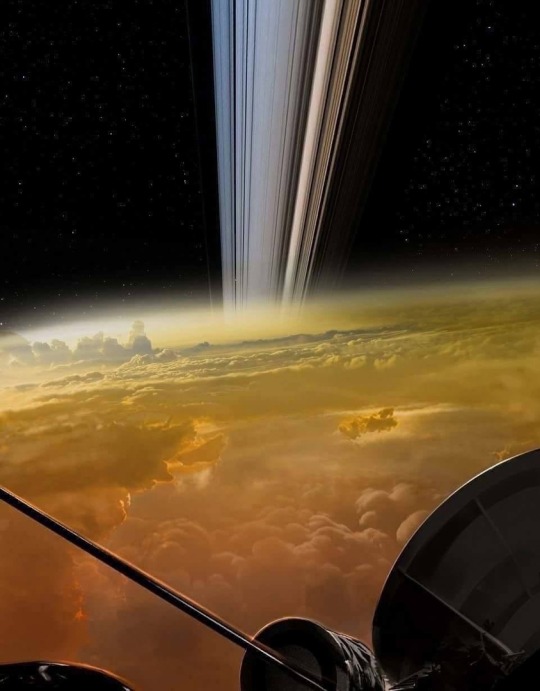
Cassini-Huygens Last Dives (Illustration).
NASA/ESA/JPL.
72 notes
·
View notes
Link
Venture into the unknown with SpaceTime Series 27 Episode 50, as we embark on an interplanetary adventure that transcends the boundaries of our earthly skies. NASA confirms its bold mission to dispatch a pioneering rotocopter to the enigmatic Saturnian moon, Titan. The Dragonfly mission is set to soar through Titan's dense atmosphere, exploring its organically rich landscapes in search of prebiotic chemical processes that mirror the early Earth. With a launch date set for July 2028 and a budget of $3.35 billion, Dragonfly promises to revolutionize our understanding of this distant, methane-drenched world.
As we bid a heartfelt farewell to the Mars Ingenuity helicopter, we celebrate its unprecedented achievements on the Red Planet. Despite a hard landing ending its aerial escapades, Ingenuity's legacy endures as it transitions to a stationary science platform, continuing to collect invaluable data for future Martian exploration.
Amidst escalating global tensions, South Korea asserts its space prowess with the launch of a new spy satellite, keeping a vigilant eye on its northern neighbor. This strategic move marks a significant step in the intensifying space race on the Korean Peninsula, as nations jockey for celestial dominance and surveillance capabilities.
Join us as we also delve into the Science Report, confronting the harsh realities of climate change with another bleaching event on the Great Barrier Reef and examining the global hotspots of cybercrime. Plus, we'll explore the latest in technology, from AI-enhanced chips to the ongoing evolution of smartphone supremacy.
For the full cosmic journey, visit our website at https://spacetimewithstuartgary.com and support the show at https://www.spreaker.com/show/spacetime. Discover the universe's wonders with us on SpaceTime.
This week's episode is brought to you by NordPass. Navigate the digital universe with confidence using a password manager you can trust. Secure your cosmic exploration at www.bitesz.com/nordpass.
Listen to SpaceTime on your favorite podcast app and follow us on Twitter @stuartgary, Instagram, YouTube, and Facebook.
Become a supporter of this podcast: https://www.spreaker.com/podcast/spacetime-with-stuart-gary--2458531/support.
This episode is brought to you with the support of NordPass....the password manger we use and the one need to have in your life to make onlne easier. Check out our great offer by visiting www.bitesz.com/nordpass
#atmosphere#cassini-huygens#dragonfly#exploration#helicopter#ingenuity#korea#mars#mission#moons#nasa#north#prebiotic#satellite#saturn's#saturnian#south#spy#surveillance#titan
0 notes
Text
About the Planet Saturn
About the Planet Saturn: A Journey Through the Gas Giant’s Mysteries
ALL PLEASUER
Welcome to our exploration of the fascinating planet Saturn, the sixth planet from the Sun and the second-largest in our Solar System. This blog post will delve into the intriguing aspects of this gas giant, from its composition primarily of hydrogen and helium, to its iconic rings made of billions of particles of…

View On WordPress
#Ancient Greeks#Astronomy#Cassini Mission#Discovery of Saturn#Enceladus#Extreme Weather#Gas Giant#Great White Spot#Hydrogen and Helium#Iapetus#Ice and Rock Particles#Outer Space#Planet Saturn#Roman God Saturn#Saturn#Saturn Research#Saturn&039;s Atmosphere#Saturn&039;s Composition#Saturn&039;s Gravity#Saturn&039;s History#Saturn&039;s Moons#Saturn&039;s Pressure#Saturn&039;s Rings#Saturn&039;s Storms#Saturn&039;s Temperature#Solar System#Space Exploration#Space Science#Titan#Voyager Mission
0 notes
Text

#source:youtube#name:What Did Cassini See During Its Historic Mission To Saturn? 1997-2017 (4K UHD)#channel:V101 SPACE#saturn
0 notes
Text
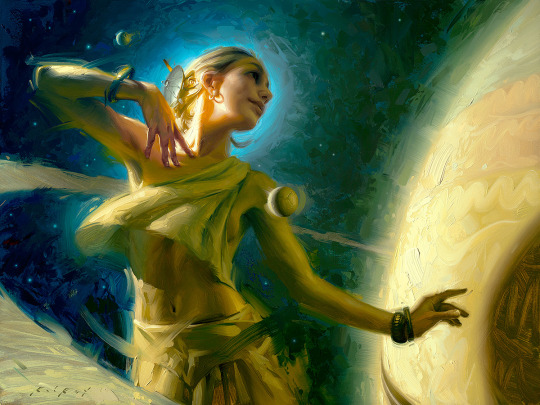

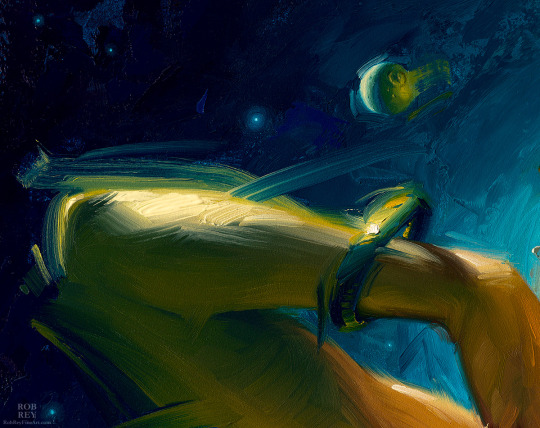

Cassini Spacecraft
Oil, 18 x 24 in, 2018
In our pursuit to understand the solar system we find ourselves in, we sent an explorer on a billion mile journey to the Saturnian system. The Cassini Spacecraft sent back amazing new data and images of Saturn and it's 62 known moons, 46 of which were unknown when Cassini left. We learned that the moon, Enceladus, may have everything it needs to support life deep in it's global ocean, Titan has a liquid methane sea, and so much more.
In 2017, low on fuel after twenty years in space and so much information gained, Cassini took several dives between Saturn and it's rings to learn a little more before it's mission came to an end. To avoid possible microbial contamination of any of Saturn's moons, Cassini dove and burned up in Saturn's atmosphere, while sending back it's final data.
Prints: https://robrey.storenvy.com
438 notes
·
View notes
Photo
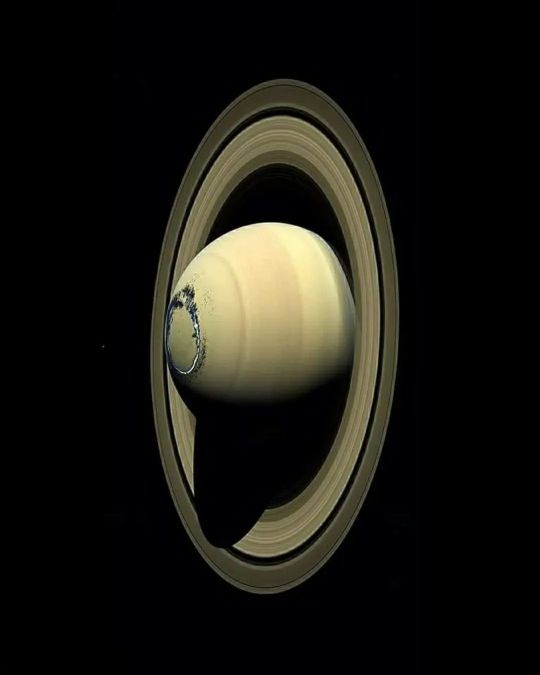


“ The aurora on Saturn “:
like on Earth and Jupiter, are generated by the interaction between the strong and rotating magnetic field of the planet and the solar wind, the stream of particles emitted by the Sun. 🪐
The aurora on Saturn, which are only visible in ultraviolet light, pulsate and change as the underlying process varies. They form in the polar regions, high above the planet’s atmosphere where the magnetic field lines twist and the interplanetary plasma is caught in them.
Cassini flew through these clouds of plasma and the first analysis of this shows that aurora on Saturn are caused by heavier particles than on Earth. In that respect, the planet’s aurora are similar to Jupiter’s ones. That said, the team stresses that the underlying mechanism is the same among the three planets. Despite this, there are still many mysteries left to uncover. “Surprisingly many questions revolving around Saturn's auroras remain unanswered, even after the outstanding success of the Cassini mission,” lead author Alexander Bader, a graduate researcher at Lancaster University said in a statement. "This last set of close-up images gives us unique highly detailed views of the small-scale structures which couldn't be discerned in previous observations by Cassini or the Hubble Space Telescope. We have some ideas about what their origin could be, but there is still a lot of analysis to be done.
// Everything About Earth
#space#planets#earth#moon#mercury#Mars#Venus#jupiter#Saturn#Neptune#SolarSystem#galaxy#Galaxies#MilkyWay#universe#explore#follow#discover
605 notes
·
View notes
Text
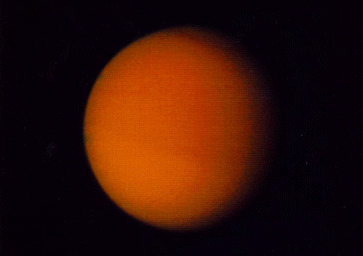
Titan: Saturn's Smog Moon - September 23rd, 1995.
"The largest moon of Saturn is a rare wonder. Titan is the only one of Saturn's moons with an atmosphere, and one of only two moons in the Solar System with this distinction (Neptune's Triton is the other). Titan's thick cloudy atmosphere is mostly nitrogen, like Earth's, but contains much higher percentages of "smog-like" chemicals such as methane and ethane. The smog may be so thick that it actually rains "gasoline-like" liquids. The organic nature of some of the chemicals found in Titan's atmosphere cause some to speculate that Titan may harbor life! Because of its thick cloud cover, however, Titan's actual surface properties remain mysterious. Voyager 1 flew by in 1980, taking the above picture, and much has been learned from Hubble Space Telescope observations. The Cassini mission scheduled for launch in 1997 will map Titan's surface, helping to solve some of its mysteries."
224 notes
·
View notes
Text
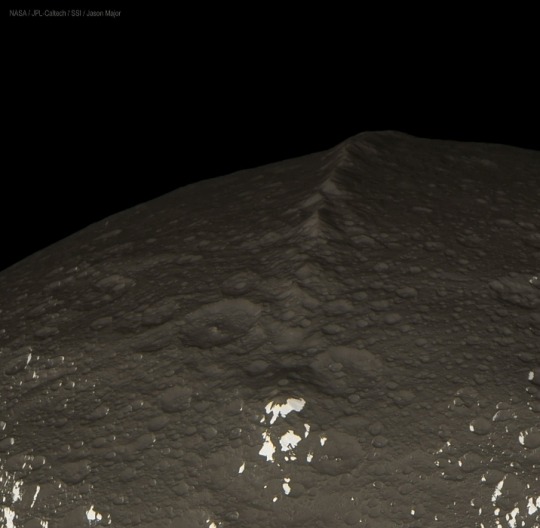

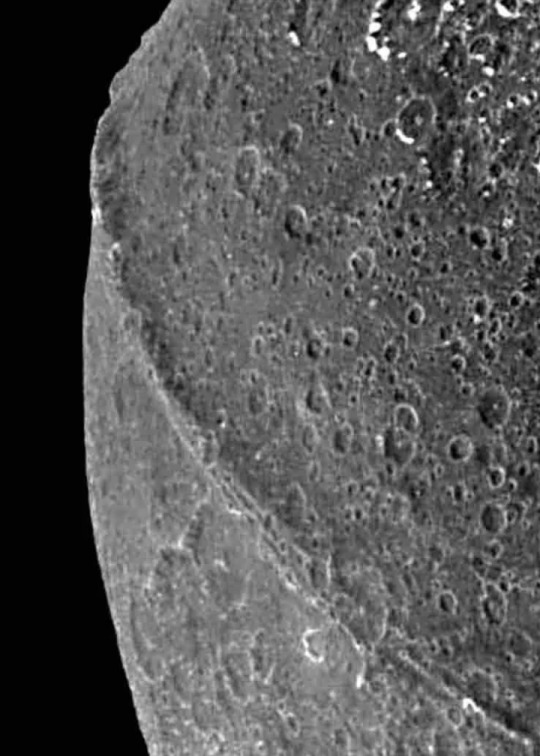

Clearest images ever taken of Equatorial Ridge on Saturn's moon Iapetus.
—
The equatorial ridge is the tallest mountain feature on Saturn's moon Iapetus.
It is 20 km (12 mi) high and is the third tallest mountain structure in the Solar System.
It runs along most of Iapetus' equator. It was discovered by the Cassini probe on 31 December 2004.
Cassini–Huygens, commonly called Cassini, was a space-research mission by NASA, the European Space Agency (ESA), and the Italian Space Agency (ASI) to send a space probe to study the planet Saturn and its system, including its rings and natural satellites.
#Saturn#Equatorial Ridge#Iapetus#moon#planet#astronomy#Cassini#Solar System#Cassini–Huygens#space probe#NASA#European Space Agency (ESA)#Italian Space Agency (ASI)
90 notes
·
View notes
Text

As Voyager 1's mission draws to a close, one planetary scientist reflects on its legacy
For nearly 50 years, NASA's Voyager 1 mission has competed for the title of deep space's little engine that could. Launched in 1977 along with its twin, Voyager 2, the spacecraft is now soaring more than 15 billion miles from Earth.
On their journeys through the solar system, the Voyager spacecraft beamed startling images back to Earth—of Jupiter and Saturn, then Uranus and Neptune and their moons. Voyager 1's most famous shot may be what famed astronomer Carl Sagan called the "pale blue dot," a lonely image of Earth taken from 6 billion miles away in 1990.
But Voyager 1's trek could now be drawing to a close. Since December, the spacecraft--which weighs less than most cars--has been sending nonsensical messages back to Earth, and engineers are struggling to fix the problem. Voyager 2 remains operational.
Fran Bagenal is a planetary scientist at the Laboratory for Atmospheric and Space Physics (LASP) at CU Boulder. She started working on the Voyager mission during a summer student job in the late 1970s and has followed the two spacecraft closely since.
To celebrate Voyager 1, Bagenal reflects on the mission's legacy—and which planet she wants to visit again.
Many are impressed that the spacecraft has kept going for this long. Do you agree?
Voyager 1's computer was put together in the 1970s, and there are very few people around who still use those computing languages. The communication rate is 40 bits per second. Not megabits. Not kilobits. Forty bits per second. Moreover, the round-trip communication time is 45 hours. It's amazing that they're still communicating with it at all.
What was it like working on Voyager during the mission's early days?
At the very beginning, we used computer punch cards. The data was on magnetic tapes, and we would print out line-plots on reels of paper. It was very primitive.
But planet by planet, with each flyby, the technology got a lot more sophisticated. By the time we got to Neptune in 1989, we were doing our science on much more efficient computers, and NASA presented its results live across the globe over an early version of the internet.
Think about it—going from punch cards to the internet in 12 years.
How did the Voyager spacecraft shape our understanding of the solar system?
First of all, the pictures were jaw-dropping. They were the first high-quality, close-up pictures of the four gas giant planets and their moons. The Voyagers really revolutionized our thinking by going from one planet to the other and comparing them.
Jupiter and Saturn's ammonia white and orange clouds, for example, were violently swept around by strong winds, while Uranus and Neptune's milder weather systems were hidden and colored blue by atmospheric methane. But the most dramatic discoveries were the multiple distinct worlds of the different moons, from Jupiter's cratered Callisto and volcanic Io to Saturn's cloudy Titan to plumes erupting on Triton, a moon of Neptune.
The Jupiter and Saturn systems have since been explored in greater detail by orbiting missions—Galileo and Juno at Jupiter, Cassini at Saturn.
Voyager 2 is the only spacecraft that has visited Uranus and Neptune. Do we need to return?
My vote is to return to Uranus—the only planet in our solar system that's tipped on its side.
We didn't know before Voyager whether Uranus had a magnetic field. When we arrived, we found that Uranus has a magnetic field that's severely tilted with respect to the planet's rotation. That's a weird magnetic field.
Jupiter, Saturn and Neptune all emit a lot of heat from the inside. They glow in the infrared, emitting two and a half times more energy than they receive from the sun. These things are hot.
Uranus isn't the same. It doesn't have this internal heat source. So maybe, just maybe, at the end of the formation of the solar system billions of years ago, some big object hit Uranus, tipped it on its side, stirred it up and dissipated the heat. Perhaps, this led to an irregular magnetic field.
These are the sorts of questions that were raised by Voyager 30 years ago. Now we need to go back.
Culturally, Voyager 1's most lasting impact may be the 'pale blue dot.' Why?
I have huge respect for Carl Sagan. I met him when I was 16, a high school student in England, and I shook his hand.
He pointed to the Voyager image and said, "Here we are. We're leaving the solar system. We're looking back, and there's this pale blue dot. That's us. It's all our friends. It's all our relatives. It's where we live and die."
This was the time we were just beginning to say, "Wait a minute. What are we doing to our planet Earth?" He was awakening or reinforcing this need to think about what humans are doing to Earth. It also evoked why we need to go exploring space: to think about where we are and how we fit into the solar system.
How are you feeling now that Voyager 1's mission may be coming to an end?
It's amazing. No one thought they would go this far. But with just a few instruments working, how much longer can we keep going? I think it will soon be time to say, "Right, jolly good. Extraordinary job. Well done."
44 notes
·
View notes
Text

Interplanetary Earth
In an interplanetary first, on July 19, 2013 Earth was photographed on the same day from two other worlds of the Solar System, innermost planet Mercury and ringed gas giant Saturn. Pictured on the left, Earth is the pale blue dot just below the rings of Saturn, as captured by the robotic Cassini spacecraft then orbiting the outermost gas giant. On that same day people across planet Earth snapped many of their own pictures of Saturn. On the right, the Earth-Moon system is seen against the dark background of space as captured by the robotic MESSENGER spacecraft, then in Mercury orbit. MESSENGER took its image as part of a search for small natural satellites of Mercury, moons that would be expected to be quite dim. In the MESSENGER image, the Earth (left) and Moon (right) are overexposed and shine brightly with reflected sunlight. Destined not to return to their home world, both Cassini and MESSENGER have since retired from their missions of Solar System exploration.
#interplanetary#beautiful earth#earth#planet saturn#planet mercury#astronomy photography#astronews#astrography#astronomers#astrophotography#astrophysics#astronomy#nasa#universe#nasa photos#outer space#nasawebb#hubble space telescope#planetary nebula#planetary science#science facts#space science#science#astro notes#astro community#astrology observations#astro observations#astroblr#astro boy#space travel
58 notes
·
View notes
Text
A study zooms in on data that NASA's Cassini gathered at Saturn's icy moon and finds evidence of a key ingredient for life and a supercharged source of energy to fuel it.
Scientists have known that the giant plume of ice grains and water vapor spewing from Saturn's moon Enceladus is rich with organic compounds, some of which are important for life as we know it. Now, scientists analyzing data from NASA's Cassini mission are taking the evidence for habitability a step further: They've found strong confirmation of hydrogen cyanide, a molecule that is key to the origin of life.
Continue Reading.
79 notes
·
View notes
Text

[☀️SOLAR HOUSE | Chapter Two | Pg. 8]
Crossfaded Encounters
This furry webcomic / comic about the solar system updates every Tuesday!
Previous Page
Annotations on this page: [5], [6]
[5] Voyager 2 returned thousands of images of Uranus and its system. Two notable ones include an image from the front taken on January 14th, 1986, and one from the back, taken on January 25th of the same year.
Source: NASA
[6] Cassini-Huygens was an orbiter and probe mission sent to Saturn that studied the planet and its moons between 2004 and 2017. During its final mission phase, The Grand Finale, the spacecraft orbited between Saturn’s atmosphere and its rings before plunging into the planet.
Source: NASA
#personification#gijinka#astronomy#space#furry#furry art#sfw furry#digitalart#oc#originalcharacter#solarhouse#character design#mwf art#mwf#milky way fandom#planet#comic#uranus#saturn#avian#springbok#antelope
63 notes
·
View notes
Link
Prepare for a cosmic exploration that takes us from the realm of science fiction to the frontiers of science reality! In this thrilling episode of Space Nuts, join Andrew Dunkley and Professor Fred Watson as they delve into the mysteries of our very own solar system Death Star. No, it's not about to obliterate a planet; it's Mimas, Saturn's moon, capturing the scientific spotlight with a revelation that's causing quite the stir. Discover why this celestial body, bearing a striking resemblance to the infamous Star Wars construct, is now making waves with a potential sub-surface ocean hiding beneath its cratered façade.
But that's not all that's brewing in the interstellar pot. We're also venturing to the red plains of Mars, confronting the possibility that bacteria might not just survive but thrive under the harsh Martian conditions. What does this mean for future human missions to the Red Planet? Could these microscopic stowaways pose a threat to astronauts, or might they hold the key to unlocking the secrets of life beyond Earth?
With a blend of intrigue and expertise, Andrew and Fred navigate through these cosmic questions, offering insights that will leave you pondering long after the episode ends. So buckle up, space enthusiasts, as we embark on another adventure that's sure to expand your universe.
For those hungry for more interstellar knowledge, be sure to subscribe to Space Nuts on your favorite podcast platform and join our growing community of astronomy aficionados. With new episodes filled with astronomical wonders and answers to your burning space queries, Space Nuts is your gateway to the cosmos. Until next time, keep gazing upward and let your curiosity lead the way!
Become a supporter of this podcast: https://www.spreaker.com/podcast/space-nuts--2631155/support.
Show notes created by https://headliner.app
---
📋 Episode Chapters
(00:00) This is space nuts. Coming up, we're looking at the Death Star
(03:05) It might be opportunist bacteria that follows the bite that could cause Alzheimer's
(04:39) Fred says moon Mimus actually librates around planet Earth
(12:16) Andrew Ker: Mimas and Enceladus are totally different moons
(18:56) NASA to try flutter test on its ingenuity helicopter on Mars
(19:52) Scientists have tested four human infectious bacteria to survive harsh Martian environments
(26:37) Fred Watson says bacteria could pose a risk to astronauts on Mars
Become a supporter of this podcast: https://www.spreaker.com/podcast/space-nuts--2631155/support.
#andrew#astrobiology#cassini#dunkley#enceladus#europa#extraterrestrial#ganymede#libration#mission#missions#moons#nuts#oceans#planetary#podcast#professor#saturn's#science#space
0 notes
Photo

2023 March 31
Seeing Titan
Image Credit: VIMS Team, U. Arizona, U. Nantes, ESA, NASA
Explanation: Shrouded in a thick atmosphere, Saturn's largest moon Titan really is hard to see. Small particles suspended in the upper atmosphere cause an almost impenetrable haze, strongly scattering light at visible wavelengths and hiding Titan's surface features from prying eyes. But Titan's surface is better imaged at infrared wavelengths where scattering is weaker and atmospheric absorption is reduced. Arrayed around this visible light image (center) of Titan are some of the clearest global infrared views of the tantalizing moon so far. In false color, the six panels present a consistent processing of 13 years of infrared image data from the Visual and Infrared Mapping Spectrometer (VIMS) on board the Cassini spacecraft orbiting Saturn from 2004 to 2017. They offer a stunning comparison with Cassini's visible light view. NASA's revolutionary rotorcraft mission to Titan is due to launch in 2027.
∞ Source: apod.nasa.gov/apod/ap230331.html
149 notes
·
View notes
Text
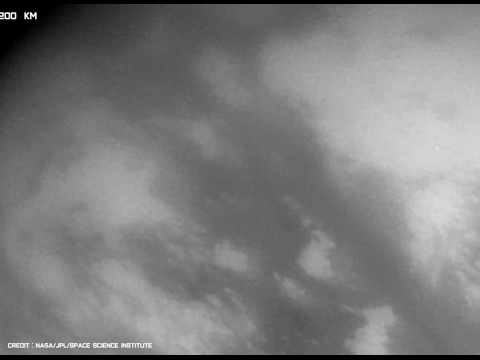
#source:youtube#name:What Did Cassini See During Its Historic Mission To Saturn? 1997-2017 (4K UHD)#channel:V101 SPACE#saturn moon
0 notes
Text
Science fact of the day- Liquid rocket engines!
Because solid rockets are not quite effiecent enough and lack control, other types of engines are very needed. Liquid engines make up the other type of chemical rocket, although these two come in two main types.
Pressure Fed engines are the simpler type of engine. these engines will have their fuel tank, and then behind that, there will be a large tank filled with pressurized gas of some kind. whenever they need to burn the engine, they open valves and the pressure pushes the fuel down into the engine so that it can burn inside the combustion chamber. There are a few major advantages to pressure fed engines: for one, theyre incredibly reliable. with other engine types like we'll see later, there's a lot more systems that all have to work better for the engine to work, and if just one fails, your engine could be done, or even worse, your whole rocket could explode. with a pressure fed engine, theyre far more likely to just work when you turn them on, every single time. Which is another advantage- they can be used over and over and over again as long as you have fuel. they're great for missions that will need to do multiple smaller burns, such as those exploring other planets. Cassini, for example, fired its two engines a combined 200 ish times or so in order to line in up to have the best orbit for studying different things about Saturn as well as lining up orbital encounters. Only a pressure fed engine can have that sort of reliability. however, they have a major downside: theyre not super effecient- in fact, theyre often similar to solid rocket motors, in that 2 ish km/s range. still, for the reliability they provide theyre still often the best option.
I should also mention cold gas thrusters- theyre basically this taken to the extreme. they cut out the middle man by just straight up pushing out pressurized gas instead of pushing fuel into a combustion chamber. they're incredibly simple, they're incredibly reliable, and they're like, way less effecient. they do still have a good use, and that's attitude control. if you look at a picture of the space shuttle, you see all these little holes in the front and some itty bitty thrusters on the back- it's a large number of cold gas thrusters that can be used to rotate the spacecraft in literally any way they need. because cold gas thrusters are really really simply and reliable, this makes them the best suited to this tast, which requires precision in firing the engines and reliability to opperate them literally hundreds of times, maybe even within a single mission. these kinds of systems are called Reaction Control Systems (at least it was on the space shuttle) and that's basically the only niche these guys fill but theyre still pretty neat
finally, we have pump fed rockets. these are the real big boys, your F-1s and your RS-25s and your Merlins and your Raptors. The defining aspect here is a turbopump- basically its a pump built to spin at insanely fast speeds (on the RS-25, it was THIRTY THOUSAND rpm), and with high torque too, because they need to to move this much fuel, and again using the RS-25s as an example, it was something like 800 kilos per second for each individual engine, although the F-1 engine burned like 2500 kilos per second per engine, which is like an entire car's weight of fuel in a single second flowing through those pumps. so this raises the question? how the fuck do you power a pump that powerful? well, we have a bunch of rocket fuel lying around, so why not use just a little bit of that? only a very small amount of fuel is actually burned in the turbopump, so its a fairly small price to play for being able to achieve the absurdly high thrusts of rockets. Now, the engines i've talked about here are probably doing more than the average rocket engine, most probably have rpms in the 1-10 thousand range, and handle far less propellant per second, but i like going to the extremes to show the kinda shit these engines do.
You can probably see why these engines are so complicated. However, the benefits are easily worth it. They're the only way you can come even close to the power of solid rocket boosters, and they have the added bonuses of being more efficiency, while also being controllable. while many of them are made to only fire one time, they can usually be gimbled (pointed a little bit to steer the rocket) while executing their burn, and some of them can be operated multiple times in one flight, or at least be refurbished between flights (such as the RS-25). so how do they do on efficiency compared to the other engines? well it actually depends massively on their fuel- which i'll talk about tomorrow so byeeeeee
26 notes
·
View notes